Book Review by Wallace Wyss –
Carrozzieri Italiani
Title: Carrozzieri Italiani
Publisher: Giorgio Nada Editore
Binding: Hardback with slip cover
Text: Italian & English
Pages: 260
Author: Elvio Deganello
Price: $120 USD
We scribes who write about Italian design were, before this book, often working in the dark. Oh, we knew the names of various coachbuilders, and could find the easy-to-find stuff (Bertone press pictures, Pininfarina press pictures) but this book goes way way beyond the easy to find into the truly obscure.
The main value of Carrozzieri Italiani, I think, is the rare, rare photos, many no doubt culled from private archives. They contrast, almost jarringly with more recent color pictures.
The book is organized alphabetically, divided into sections, devoted to coachbuilder such as Stabilimeni Farina, Touring, Vignale, Viotti and many more.
Every page is a revelation. And the English text which I had to judge by, is well written. Even in the first entry you learn more than you’ve read in a dozen articles, like “the 1964 crisis meant Carrozzeria Allemano was too small to be a manufacturer and too big to be an artisan,” thus explaining why the coachbuilder closed its doors.
There might be argument on some to the point of “why devote pages to obscure coachbuilders like Balbo? Whoever heard of them?”
But that’s the purpose of this book–to educate you on the little known actors who were on stage at the time.
Bertone of course gets a good chunk of space and the book’s author credits Franco Scaglione for giving Bertone direction. Giugiaro and Gandini each get equal space. The author doesn’t go into why Giugiaro left Bertone to go to Ghia, a firm then run by a mercurial marketer, DeTomaso. But that was just a stepping stone to starting his own carrozzeria.
In the Bertone section there is a big picture of the B99, a Bertone Jaguar. I think this design has been very influential and it’s only too bad that Bertone went broke not long after spending their own money to make it.
The book makes no prejudice toward one era or another and to anyone who loves the Fifties, it’s a treasure trove of never before seen pictures. Occasionally there will be a picture that is spread across two pages like of the Boano-bodied Lincoln Indianapolis.
There are coachbuilders in here who had to put bread on the table by building ambulances and other commercial vehicles but still shine in their coachbuilt cars, like Boneschi.
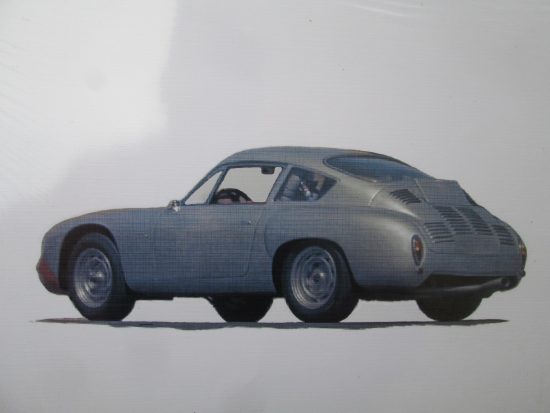
The Porsche Abarth Carrera is discussed, but not the full tale of how Porsche paid for Zagato but got delivered a car by a lesser coachbuilder instead (Illustration from Author’s Monterey Collection)
The writing, is, as I say, very discerning and shows the author’s knowledge of the subject. Take this comment on Castagna’s work,
In the early 30s Emilio’s creativity began to show a certain awkwardness in relation to fashion that imposed rounded fittings and more wraparound wings. That way, the majesty of the shapes was contaminated by the complete ostentation of the pomp and richness.
In other words, Emilio, ya went too far….
LITTLE GUYS GET A BREAK HERE…
Some of the coachbuilders get space that you are surprised they were accorded, such as Colli, who did some very influential cars like the ’39 Fiat Roselli 1100 Sport, a competitor in the ’40 Mille Miglia. But then you see their commercial vehicles and wonder: why are they here? The answer is they chose to go that commercial path but early on had great potential.
One of my favorites included here is Fantuzzi, whose prewar stuff they show, plus some of the oddball cars like his prototype Testa Rossa (full fendered-SN0766) as well as a couple of prototypes for DeTomaso (P70) and the Chinettis (who fancied themselves Ferrari designers as well as importers of Ferraris to America)
I was surprised that Leonardo Fioravanti, who worked for Pininffarina for 24 years and did some of their most famous cars, got his own chapter—I didn’t think he’d been in business under his own name long enough. His modern cars show the same vivid imagination as he did for the Pininfarina family but haven’t gotten much publicity because few, if any, have gone into production.
Fissore is another old line house where the the author starts with the ‘50s and works his way up, one of their most famous jobs being the Monteverdi Hai and the Monteverdi Palm Beach.
The makers of little cars are not slighted here—they get space too, guys like Francis Lombardi, who started out in the late ‘40s. Again in these little cars, you see design cue after design cue which I can frankly say were “stolen” later by other designers in America who are thought to have invented them like the wrap around rear window in the 1950 Fiat 500C by Lombardi. I could swear I saw that roofline on the Loewy-designed Studebaker!
I can see why there is a movement in the car collector community to honor these little cars for often they are the predecessors of later car designs, for instance Lombardi’s Fiat Abarth 1300 Scorpion.
HE DISHES SOME DIRT…
Frua gets some space, but Frua alas isn’t as well known because around ’57 he began to work for Ghia, and even went to Ghia to become head of design. Ironically he got fired when a design he did there was sold to Renault and he introduced a similar design at the auto show, embarrassing Renault. (I love these inside stories, which tell whose knife was inserted in who’s back?) He went back to freelancing.
Incidentally the inclusion of drawings in this book are welcomed because they show that sometimes the car in metal was superior to the drawing—we can’t be a jack of all trades, and it’s actually a complement that their three dimensional talent exceeded their two dimensional renderings (except for that Rolls Phantom drophead, egad what a mistake that was!).
The Ghia chapter in Carrozzieri Italiani is exceptional because it starts in the prewar period in the 1920s and then goes to the 80s. One of their high points is the Chrysler show cars like the Firearrow. They get credit for the mass produced Karmann Ghia and the Type 34 a model not sold in America that looked Corvair influenced!
One of Ghia’s most successful designers was Giorgetto Giugiaro whose separate chapter is called Giugiaro when I think it should have been entitled Ital Design, but this chapter starts with the Bizzarrini Manta and includes many of the cars he did in the “folded paper” era. Including Bugattis that weren’t produced but should be looked at again like the `999 EB218. The author devotes some space to Fabrizio, Giorgetto’s son, who is a delightful person with whom I have spent some time (driving prototypes) but doesn’t come out and say how he stacks up to the Old Man.
Michelotti is an interesting case in this book, starting out picture wise with his 1960 cars and then going into the ‘70s. Interestingly it reveals here the three seater gullwing Ferrari that the Chinettis ordered built to a Bob Peak design was a car first wrecked in an accident at St. Jovite.
Wonder if the Chinettis wanted that story told? The Michelotti sections also shows the horrible Ferrari Daytona they did that looked like a Corvette and the GTC Ferrari they cut down into a beach buggy!
You think woodies, you don’t think Italian but in the Monterossa chapter in Carrozzieri Italiani they show some woody wagons. Amazingly they did the mid-engined Nissan P389 race car, making you wonder how the Japanese found that small shop and how much they did in Italy below the radar of magazines like Road & Track?
Moretti is another coachbuilder whose name actually went on some cars as a brand. And its amazing how some of them look as if they could be Ferraris if only a little longer. One of the most rakish is the split grille 2500SS convertible they show and credit it to Michelotti though the same split grille was on a Ferrari by Giugiaro.
Since I am writing a book on Porsche, I was eager to see how much credit they gave Motto, the firm that was handed the job of doing the twenty Carrera Abarths for Porsche even though Porsche had paid to have Zagato do them. I have heard that even Motto passed the job to a third coachbuilder but this book doesn’t tell that part of the story and doesn’t accuse Motto of absconding with the job half done as I have read elsewhere.
OSI is a mysterious firm that doesn’t get much credit, but it was a behind the scenes firm, that did work for automakers. It was started by ex Chia man Luigi Segre. Among the prototypes is an odd Ford Mustang on a tubular chassis a with plastic bodywork and twin boom (twin bodied car doe for Taruffi to race).
Pininfarina gets nearly twenty pages in Carrozzieri Italiani as they should and sadly the book goes up to 2011 when they stopped producing cars.
Now I didn’t think of Scaglietti as a coachbuilder, I know he was a body repairman when first hired by Ferrari but this book portrays him as an independent coachbuilder whose main customer was Ferrari, for GT cars, though I would say he did more for them in race car coachwork as far as putting Ferrari on the map. He died in 2014 but his company lives on. There are plenty of Ferrari pictures here including several one offs. His last one off shown is the Panhard Dyna Z coupe built for a special client before he totally devoted himself to working for Enzo.
Siata is another coachbuilder here who also built cars sold under their own name. The author starts out with the 1926 Fiat they bodied and goes up to the many sports cars they built in the Fifties.
Another oddball coachbuilder (do I call them “outlaws”?) was Sibona & Basano who mostly did little cars but theirs is a name that pops up when searching for low cost coachbuilders back then, for instance the Kelly Corvette, designed by Alfredo Vignale but “farmed out” to Bassano, who was his son in law. There’s also a great Studebaker designed by Brooks Stevens that was bodied by them. But of course the most magnificant car (in my opinion) of all maybe in the whole book is their Bizzarrini Targa they did for Stile Italia. You have to remember this targa topped car predates the ’68 Corvette T-top by two years!
Carrozzeria Drogo is called Sports Cars not Carrozzeria Drogo and they were another shop that made money rebuilding wrecks until they did their own cars. They did the Ferrari “breadvan” the ASA GTC And according to this book the Maserati Tipo 151/4 chassis similar to the one Moss raced at LeMans, not to mention rebodies for Tom Meade, the American who re-invented himself as a car designer in Italy, doing customs.

The Ferrari Breadvan, an “outlaw” car commissioned by Count Volpi to needle Ferrari, is pictured in the book (this illustration from the Wyss Monterey Collection)
All in all, Carrozzieri Italiani is a magnificent book written by a journalist who not only wrote for many magazines but has authored books on Fiat Abarth, Gordini, and Bandini.
I simply can’t imagine any automotive writer or Italian car restorer or even sports car designer not having Carrozzieri Italiani on their shelf because it is a wellspring of ideas. And it properly gives credit where credit is due to various designers. I would like, though, in a later edition, to hear even more opinions and downright gossip and inside stories, because we are not only eager to see cars we had so little information on before but to find out here “the back story” on why they didn’t make it to production….
Binding and color reproduction-wise, Carrozzieri Italiani is a fine book and overall, with the knowledge imparted, well worth the $120 cover price….
Let us know what you think about Carrozzieri Italiani in the Comments.
THE AUTHOR: Wallace Wyss is the author of 18 car books. Among the latest are the Incredible Barn Finds books available straight from Enthusiast Books (715 381 9755). His art work, featuring some of the paintings shown here, will be featured in his booth at Concorso Italiano.
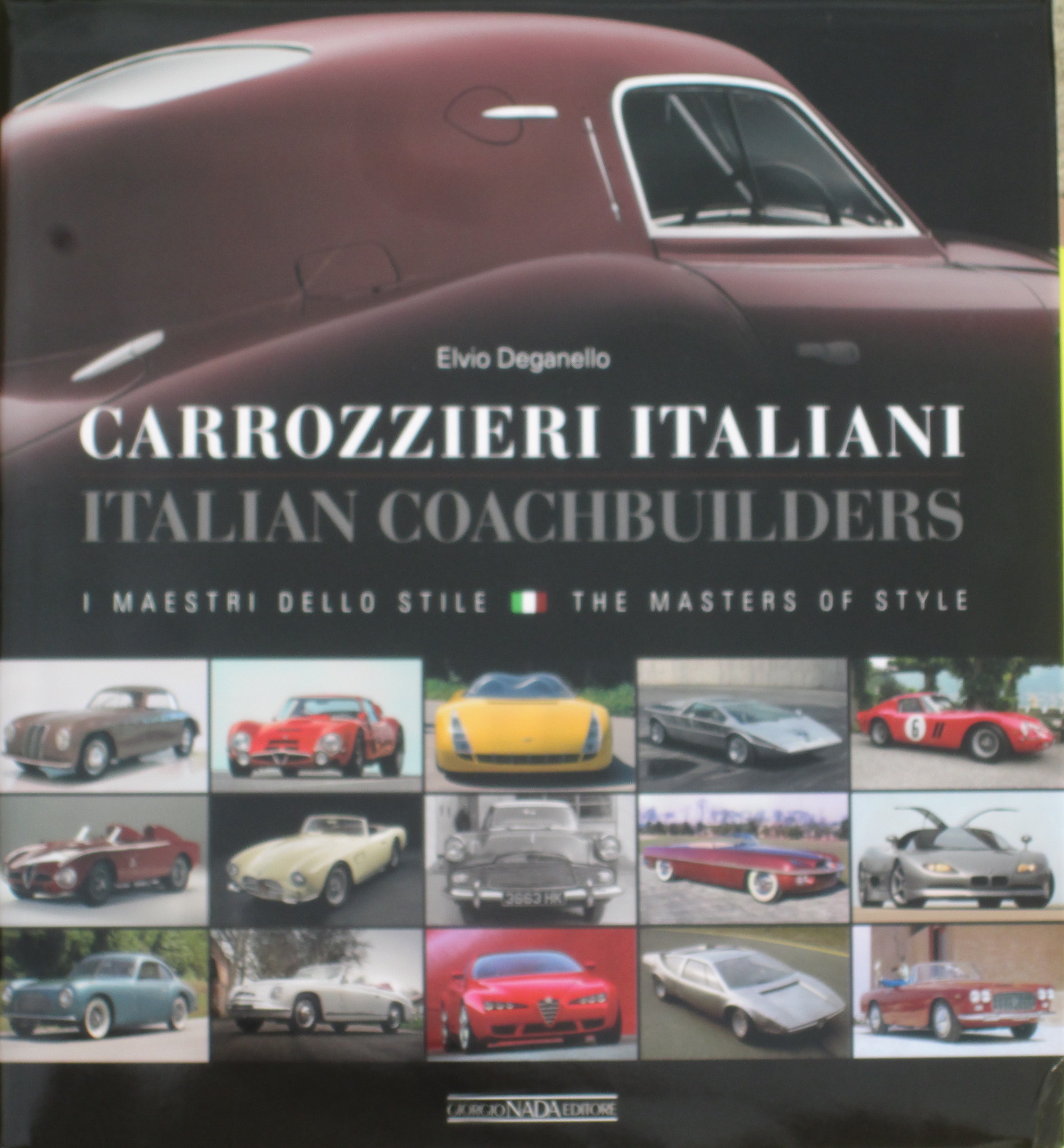
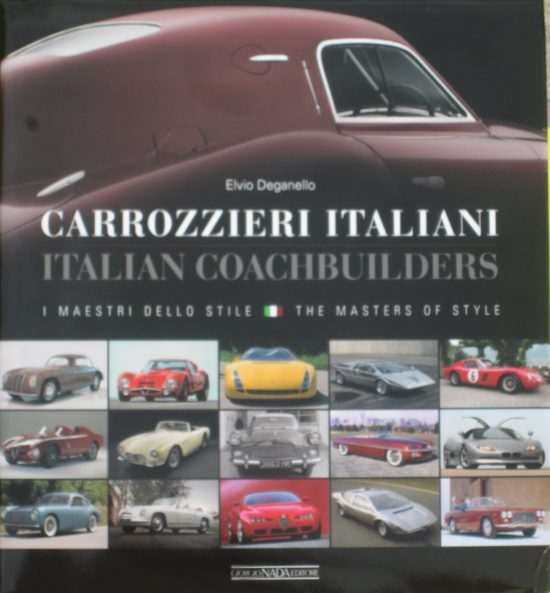
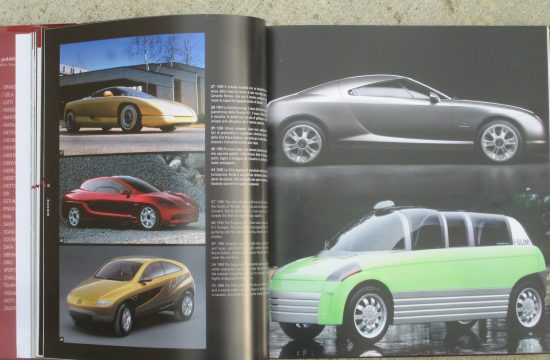
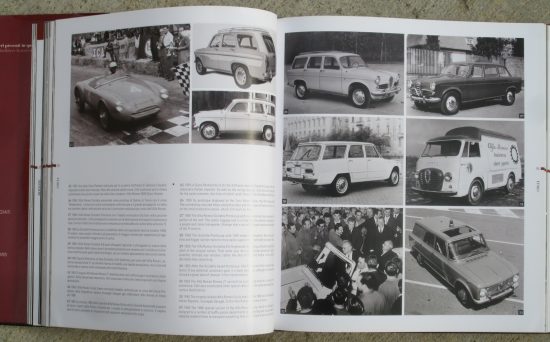
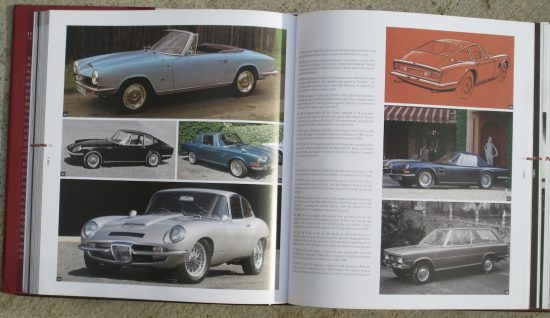
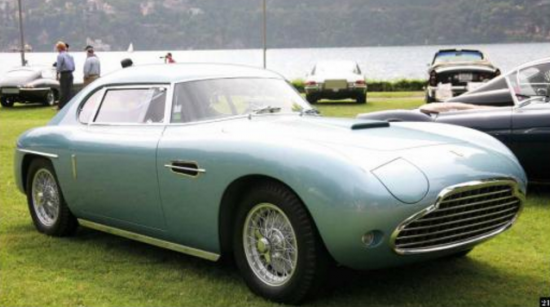
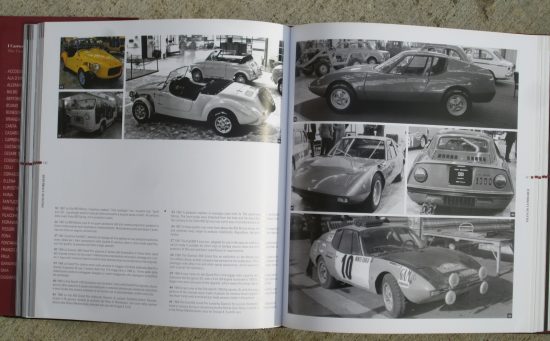
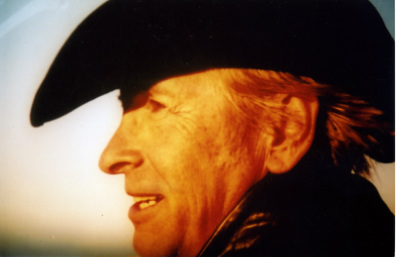

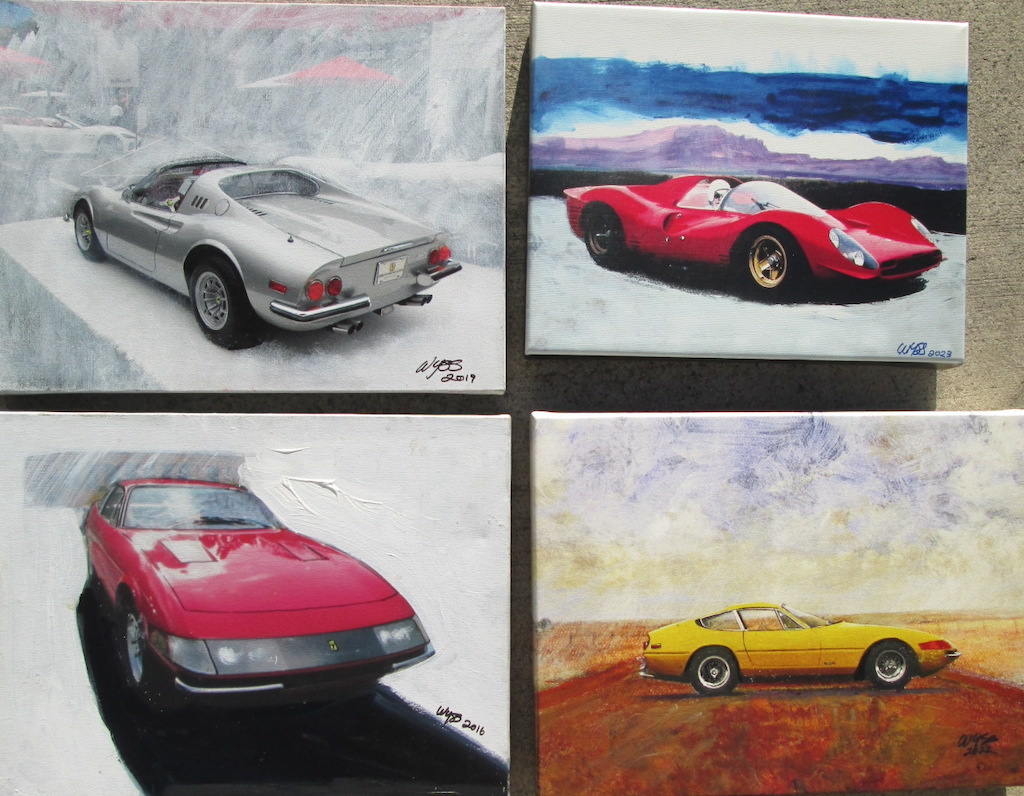

Is there any mention of the Carrozzeria – was it Gran Sport? – that did the Cobra Daytona Coupes?
They spell it as one word Grandsport and say it was founded by
Fernando Baccarini and Pietro Vaccari and say they were only in business from ’57 to ’66. It looks like getting an assignment from Shelby didn’t spur other work.They also show a Serenissima 308 mid-engine coupe done by Gransport and credit them with 150 Stanguellini FJ single seaters. The xoachbuilder was given one page
Don’t care how much you know about cars, your bound to find pictures and references to cars you never knew were made… quite an amazing book, well worth the time to acquire and enjoy…
is there much about touring superleggera, 350Gt and aston DBSC?
Any Neri & Bonacini ?
Just got my copy of this book and agree that it is a serious reference work, but I find it unforgivable that an index was not included! You mentioned that Franco Scaglione is credited with giving Bertone direction, but if one wanted to know what else Scaglione did, there’s no way to tell without reading every word in the book to learn that he designed the Lamborghini 350 GTV built by Monterosa and the achingly beautiful Alfa 33 Stradales built by Marazzi to name but a few of his creations post-Bertone. You also mentioned the Porsche Carrera GTL which Scaglione did for Abarth but the book fails to credit him for it Also glaringly omitted is any inclusion of Carrozzeria Intermeccanica whose car production numbers rivaled ISO’s.
While I would not be without this book in my library, I feel it exits as only half a book without an index to make it more usable. An index is a no-brainer to produce with computerized publishing, so I can only guess that the publishers left it out to save the cost of a few pages. If they have any sympathy for the researchers who want to make full use of the author’s work, they must create a website where an index for this book can be seen and downloaded.